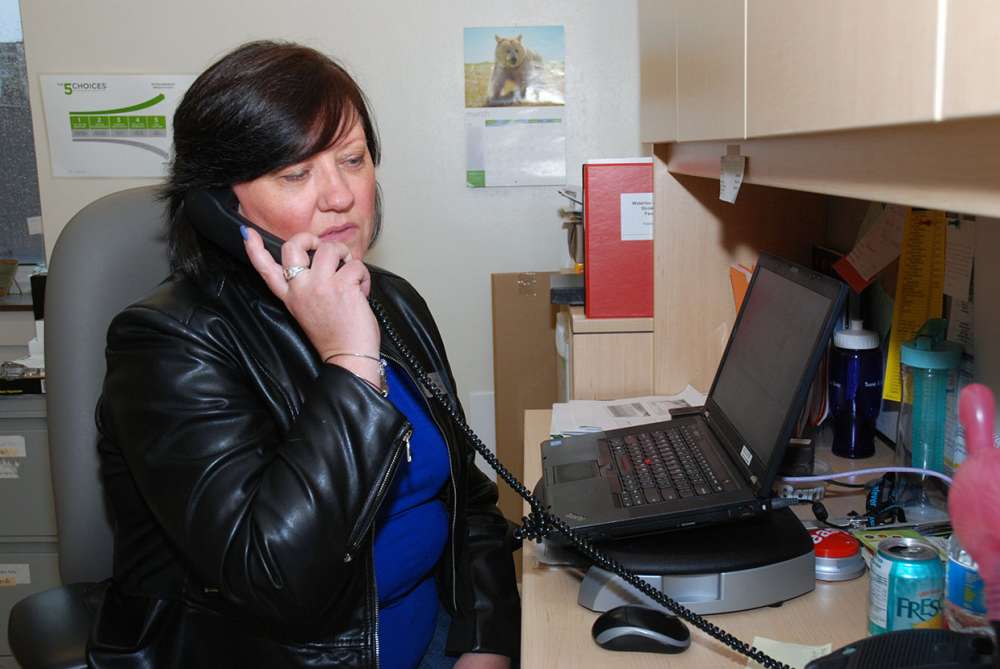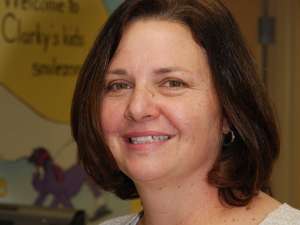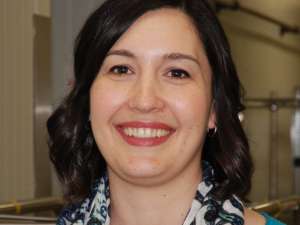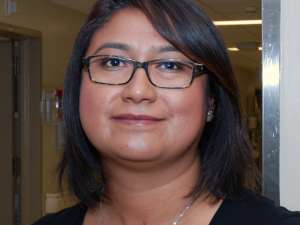
Some people know from a very young age what they want to do when they get older.
That was the case for Judy Goetz, who always knew she wanted to be a nurse, even as a child. She feels like she has the best job at WRHN because she gets to come into work and work with an amazing group of individuals who make a difference in the lives of those they encounter.
Judy is the clinical manager of the integrated stroke unit and hospital float pool. She’s been a registered nurse for 31 years, and has worked at WRHN for 30 of those years.
Not only does she enjoy the people that she works with, but she loves to be able to see new nurses grow and become the next generation of experienced nurses who will lead the way in caring for the community.
What do you find interesting and enjoy about your work?
I love the diversity that nursing has to offer. I have had the privilege of working in many different areas while at WRHN and I have held several different roles that have provided me with challenges and great joy.
What is the scope of work that you do? What does your day-to-day look like?
Presently, I have the privilege of being able to come to work and support the staff working on the unit and in the float pool that do an amazing and very challenging job of caring for patients in our community.
Each day is different and that is what I love about being a nurse, no two days are ever the same. There are always new challenges and different people that I get to interact with which in my opinion makes my job the best job ever!
What is a float pool?
The float pool is an amazing group of nursing staff that supports the KW campus with coverage in all departments. We help to fill last minute needs and support many departments within the organization when we require additional staff. It is comprised of registered nurses, registered practical nurses and clinical assistants.
The float pool staff enjoys working there because they like the change that happens as they are never in the same place each shift. They are exposed to a wide variety of patients and staff.
How did you come to work in the stroke program?
I previously was the resource nurse on one of the medicine units and then I was asked to help the program develop and open an alternative level of care (ALC) unit at the Freeport campus.
Shortly after that unit closed, I applied for the position of clinical manager in medicine. It was one of the scariest and most challenging decisions that I could have made for myself. I was fortunate enough to be successful and get the job and I have been managing the stroke unit for the past seven years.
I love interviewing keen novice nurses who are just beginning their career in nursing. They are excited and full of great ideas on how to do things differently from the "old" way of doing things. They are full of hope and dreams and I enjoy being a part of helping and seeing them grow into skilled and amazing nurses, who provide exceptional care to those individuals living in our community.
There are different types of strokes. Can you briefly explain the difference between them?
We usually see either ischemic or hemorrhagic strokes. Ischemic is when there is a clot that stops the flow of blood to a certain part of the brain. Hemorrhagic strokes occur when there is a bleed that occurs within the brain. Both can be life changing for individuals but the amazing work being done by our hospitalists, nurses, therapists and other members of the inter-disciplinary team help to make a difference however large or small in their lives.
What are the signs to look for if someone is experiencing a stroke?
Every stroke is different, depending on where the brain injury occurred and the damage suffered as a result.
Some common signs that we educate the public on are:
- Weakness (usually one side)
- Vision problems
- Difficulty with speech
- Dizziness
- Possible headache.
The Heart and Stroke Foundation puts out great information and utilizes the acronym FAST.
F – Face Is it drooping?
A – Arms Can you raise both?
S – Speech Is it slurred of jumbled?
T – Time Time to call 9-1-1
How has stroke care changed since your first started in the unit?
Stroke care has improved significantly in the last two-and-a-half years. We were mandated by the Local Health Integration Network (LHIN) to complete an integration of stroke care services. It was decided that WRHN would manage all strokes that presented at Cambridge Memorial Hospital, St. Mary’s Hospital or Waterloo Region. There was an investment in resources to assist with the integration and develop our hospital as a center of excellence for stroke care.
We have created a process in collaboration with emergency medical services and our emergency department (ED) for assessing patients that come to the ED with a “code stroke”. They are expedited to have a CT scan, lab work is completed and the patient is assessed by a stroke expert as to whether they require a clot-busting drug or not. Once the determination has been made, either the drug is administered or they are directly admitted to our unit.
We have developed special training for our staff so that they are able to manage and detect small changes in a patient’s neurological status and notify the hospitalist immediately to intervene. The process for disposition of patients has also been streamlined so that all strokes when appropriate should receive access to rehab if necessary.
We can also send patients home on a stroke care pathway, so that they can receive therapy at home if that is what is best. The patient moves through the system quickly now which makes for a better patient experience.


 Mary Thibault: helping make children’s experiences at GRH better
Mary Thibault: helping make children’s experiences at GRH better Karen Gosine: catering to patients’ dietary needs
Karen Gosine: catering to patients’ dietary needs Erika Barbosa: "I can't imagine doing anything else besides nursing"
Erika Barbosa: "I can't imagine doing anything else besides nursing"